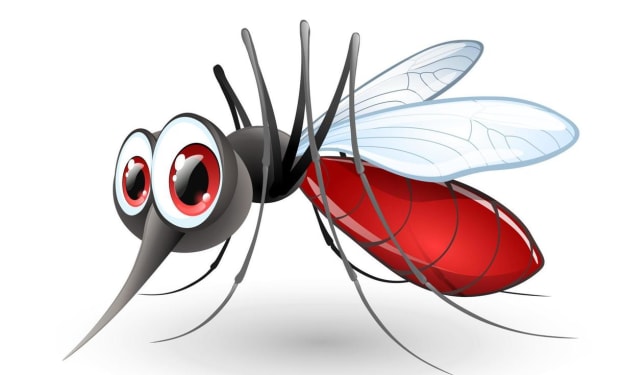Why polio might be the biggest problem in the world in 2024
Say no to polio

This is Paul Alexander. He is one of the last people to live in an Iron Lung. He was diagnosed with Polio at the age of 6 which lead to paralysis from the neck down.
The machine is made to compress and depress the chest. He recently turned 74 and still relies on the Iron Lung to keep him alive.
Polio, short for poliomyelitis, is a highly infectious viral disease that primarily affects young children. It is caused by the poliovirus, which is transmitted from person to person through fecal-oral route or less commonly, through contaminated water or food. Polio can lead to severe paralysis, respiratory problems, and, in some cases, death.
The disease has been known to humanity for thousands of years. However, its impact on society reached a peak during the 20th century when epidemics of polio occurred worldwide. In the 1950s and 1960s, polio epidemics were a major concern in many countries, causing fear and panic among communities. Thousands of children were affected, and many were left paralyzed or with permanent disabilities.
Poliovirus primarily targets the nervous system, specifically the spinal cord and brain. After entering the body through the mouth, the virus multiplies in the throat and intestines. From there, it can invade the bloodstream and spread to the nervous system. Once the virus infects the nervous system, it can cause muscle weakness, loss of reflexes, and, in severe cases, paralysis.
There are three types of poliovirus: type 1, type 2, and type 3. Each type can cause polio, and the severity of the disease can vary. In most cases, polio infection is asymptomatic or results in mild flu-like symptoms, such as fever, headache, sore throat, fatigue, and nausea. However, in a small percentage of cases, the virus can invade the central nervous system, leading to more severe symptoms.
The most severe form of polio is known as paralytic polio. It affects about 1% of those infected. Paralytic polio can cause paralysis of the limbs, breathing muscles, or both. In some cases, it can also affect the brainstem, leading to difficulties in swallowing, speaking, and even breathing. This form of polio can be life-threatening, requiring immediate medical intervention.
The introduction of polio vaccines has played a crucial role in controlling the disease. Two main types of polio vaccines are used: the inactivated polio vaccine (IPV) and the oral polio vaccine (OPV). IPV contains killed poliovirus and is administered through injections. OPV contains live, weakened poliovirus and is given orally. These vaccines have been successful in preventing polio infections and reducing the global burden of the disease.
Global efforts to eradicate polio began in 1988 with the establishment of the Global Polio Eradication Initiative (GPEI). This initiative is a partnership between various organizations, including the World Health Organization (WHO), UNICEF, Rotary International, and the U.S. Centers for Disease Control and Prevention (CDC). The GPEI aims to achieve global polio eradication through vaccination campaigns, surveillance, and community engagement.
Significant progress has been made in the eradication efforts. The number of polio cases worldwide has decreased by more than 99% since the GPEI's inception. In 2020, wild poliovirus transmission was limited to just two countries: Afghanistan and Pakistan. However, challenges remain, including vaccine hesitancy, conflict zones, and difficult-to-reach populations.
The COVID-19 pandemic has also posed challenges to polio eradication efforts. Many countries had to suspend vaccination campaigns temporarily to prioritize COVID-19 response. This pause in polio immunization created gaps in coverage, leaving vulnerable populations at risk of polio resurgence. However, efforts are underway to address these challenges and resume vaccination campaigns as soon as it is safe to do so.
The symptoms of polio can vary depending on the severity of the infection. In most cases, polio infection is asymptomatic or causes mild flu-like symptoms. However, in some individuals, especially in less than 1% of cases, polio can lead to severe complications. Here are the main symptoms associated with polio:
Asymptomatic: Many people infected with poliovirus do not display any symptoms. They may not even realize they have been infected. However, even in asymptomatic cases, individuals can still spread the virus to others.
Minor illness: Some individuals may experience a minor illness with symptoms similar to those of a common cold or flu. These symptoms may include fever, sore throat, headache, fatigue, nausea, vomiting, and muscle stiffness or pain.
Non-paralytic polio: This form of polio, also known as abortive polio, is characterized by more pronounced symptoms such as high fever, headache, stiff neck, vomiting, and muscle pain or spasms. However, there is no paralysis associated with this form of the disease, and most individuals recover fully within a week or two.
Paralytic polio: This is the most severe form of polio, affecting a small percentage of those infected. Paralytic polio can be further divided into two types:
a. Spinal polio: This type of paralytic polio affects the spinal cord and can lead to muscle weakness, floppy limbs, and in severe cases, complete paralysis. The paralysis is usually asymmetric, affecting one side of the body more than the other.
b. Bulbar polio: This type of paralytic polio affects the brainstem, which controls essential functions such as swallowing, breathing, and speaking. Individuals with bulbar polio may experience difficulty swallowing, slurred speech, respiratory problems, and potentially life-threatening complications.
It's important to note that even individuals with paralytic polio can recover over time with appropriate medical care and rehabilitation. However, some individuals may be left with long-term disabilities or require ongoing support.
If you or someone you know is experiencing symptoms that resemble polio, it is crucial to seek medical attention immediately. Early diagnosis and supportive care can help minimize the impact of the disease and prevent further complications.
Polio eradication is within reach, but sustained efforts and resources are required to ensure that no child is affected by this debilitating disease. Achieving and maintaining polio-free status globally would be a historic achievement and a testament to the power of vaccines and international collaboration. It would also pave the way for future global health initiatives and inspire confidence in the fight against other infectious diseases.
About the Creator
Littlejames
My name is Azubuike James, still a student in Federal Polytechnic Nekede Owerri Imo State ,Nigeria,
writing has always be one of the things i love doing most when i was a kid
I have read so many books and i am willing to read more





Comments
There are no comments for this story
Be the first to respond and start the conversation.